Mary Prince Worksheets
Do you want to save dozens of hours in time? Get your evenings and weekends back? Be able to teach about Mary Prince to your students?
Our worksheet bundle includes a fact file and printable worksheets and student activities. Perfect for both the classroom and homeschooling!
Resource Examples
Click any of the example images below to view a larger version.
Fact File
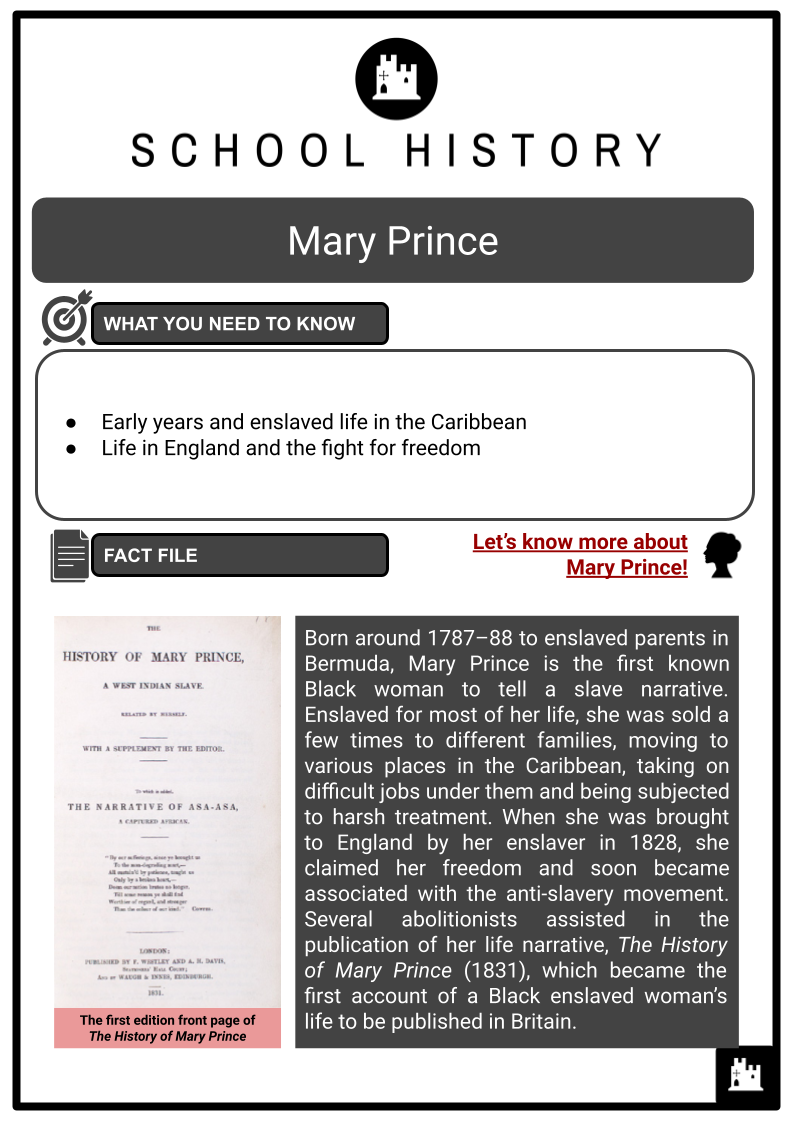
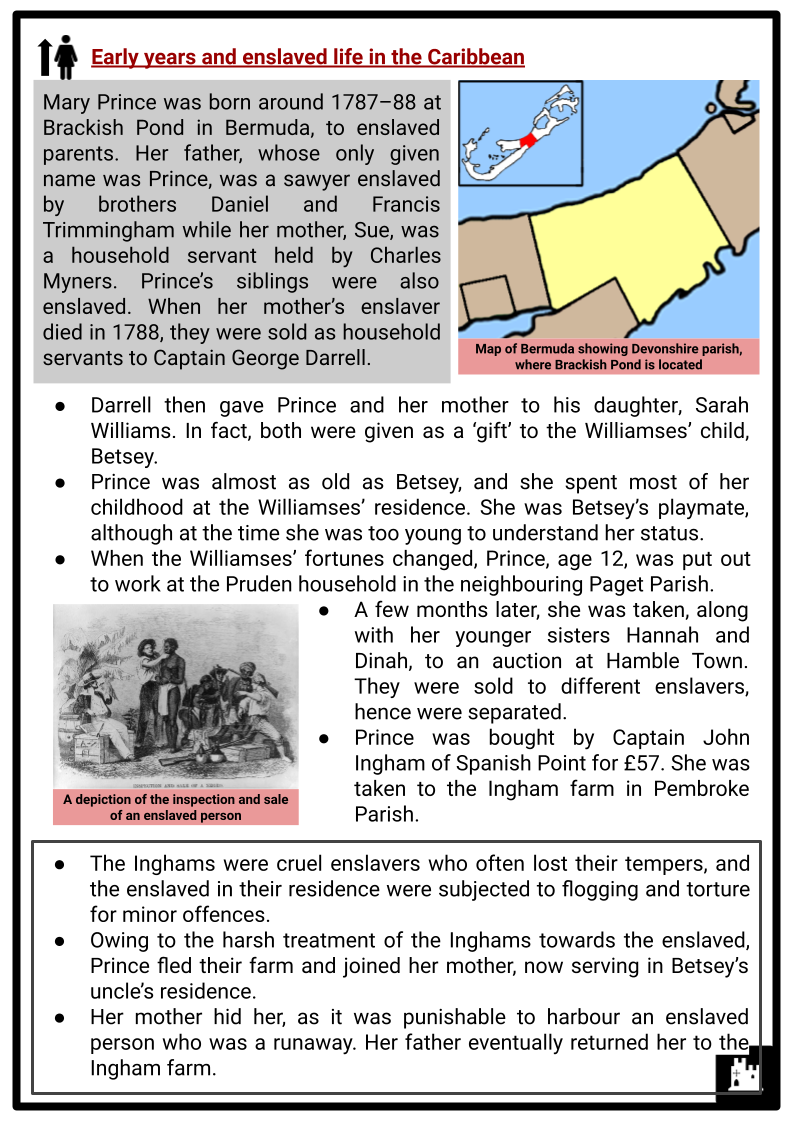
Student Activities
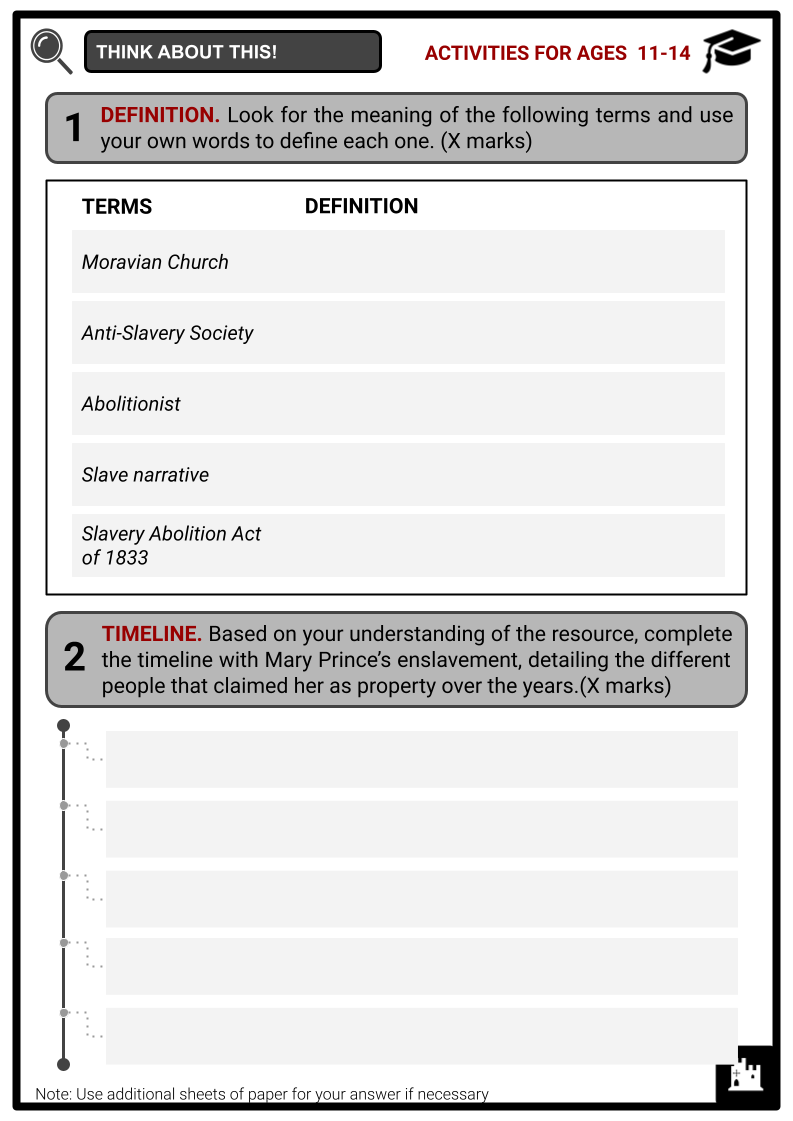
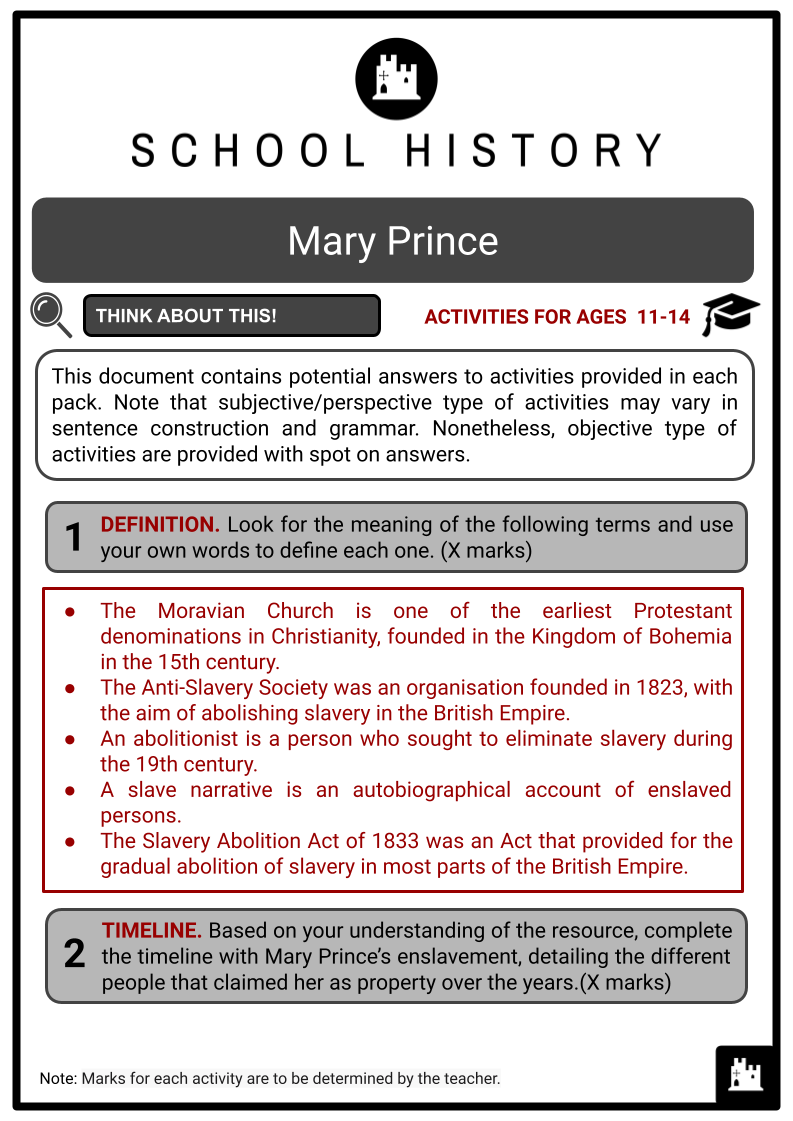
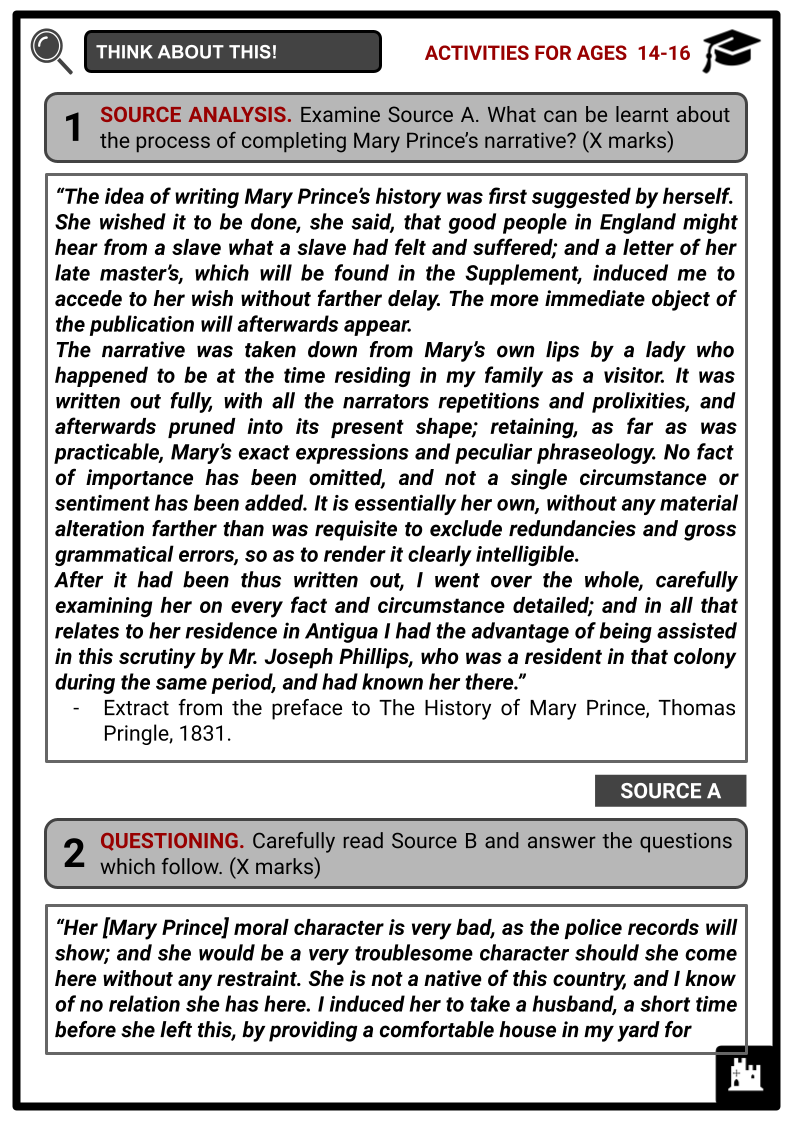
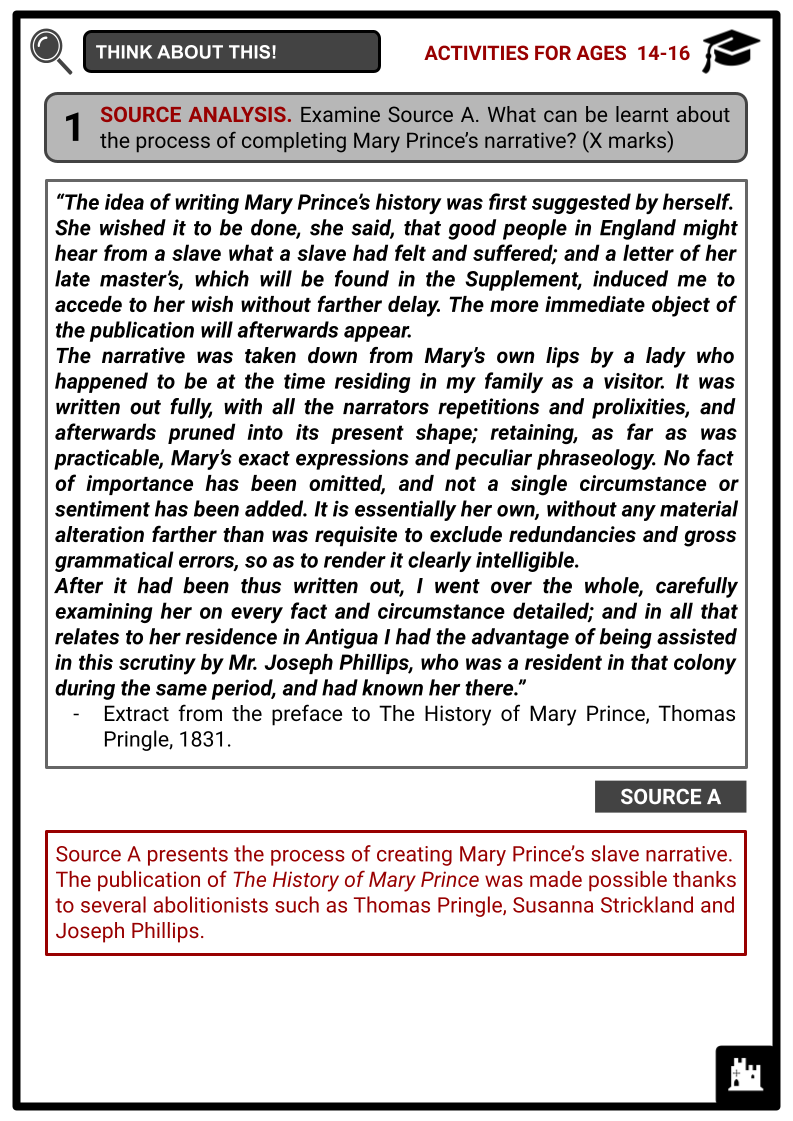
Summary
- Early years and enslaved life in the Caribbean
- Life in England and the fight for freedom
Key Facts And Information
Let’s know more about Mary Prince!
Born around 1787–88 to enslaved parents in Bermuda, Mary Prince is the first known Black woman to tell a slave narrative. Enslaved for most of her life, she was sold a few times to different families, moving to various places in the Caribbean, taking on difficult jobs under them and being subjected to harsh treatment. When she was brought to England by her enslaver in 1828, she claimed her freedom and soon became associated with the anti-slavery movement. Several abolitionists assisted in the publication of her life narrative, The History of Mary Prince (1831), which became the first account of a Black enslaved woman’s life to be published in Britain.
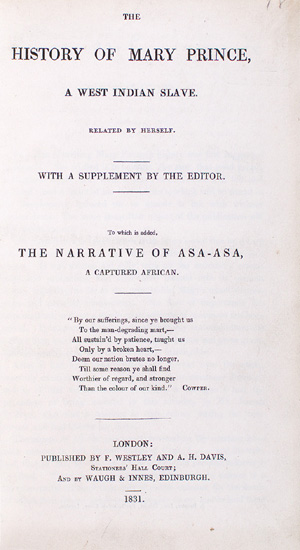
Early years and enslaved life in the Caribbean
- Mary Prince was born around 1787–88 at Brackish Pond in Bermuda, to enslaved parents. Her father, whose only given name was Prince, was a sawyer enslaved by brothers Daniel and Francis Trimmingham while her mother, Sue, was a household servant held by Charles Myners. Prince’s siblings were also enslaved. When her mother’s enslaver died in 1788, they were sold as household servants to Captain George Darrell.
- Darrell then gave Prince and her mother to his daughter, Sarah Williams. In fact, both were given as a ‘gift’ to the Williamses’ child, Betsey.
- Prince was almost as old as Betsey, and she spent most of her childhood at the Williamses’ residence. She was Betsey’s playmate, although at the time she was too young to understand her status.
- When the Williamses’ fortunes changed, Prince, age 12, was put out to work at the Pruden household in the neighbouring Paget Parish.
- A few months later, she was taken, along with her younger sisters Hannah and Dinah, to an auction at Hamble Town. They were sold to different enslavers, hence were separated.
- Prince was bought by Captain John Ingham of Spanish Point for £57. She was taken to the Ingham farm in Pembroke Parish.
- The Inghams were cruel enslavers who often lost their tempers, and the enslaved in their residence were subjected to flogging and torture for minor offences.
- Owing to the harsh treatment of the Inghams towards the enslaved, Prince fled their farm and joined her mother, now serving in Betsey’s uncle’s residence.
- Her mother hid her, as it was punishable to harbour an enslaved person who was a runaway. Her father eventually returned her to the Ingham farm.
- In 1802–03, Prince was sent to Grand Turk Island, perhaps as a punishment for running away from the Inghams. At the time, the island was a satellite colony of Bermuda.
- She was put up for auction after arriving on the island. She was purchased for £100 by Robert Darrell and taken to the family residence at the intersection of Middle Street and Market Street.
- Darrell and his son were cruel enslavers. Prince was assigned to work in the salt ponds on the island.
- Salt production for export was a pillar of the economy of Bermuda, as salt was an essential commodity used to make cheese and butter and to preserve meat and fish. The production was labour-intensive.
- Many enslaved people, including Prince, were often forced to work in poor conditions. Prince worked in the salt ponds for about ten years.
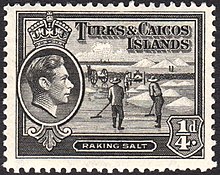
- In 1812, Prince went with the Darrells when they moved to Bermuda. Darrell’s son stayed on Grand Turk Island to take charge of the salt business.
- Prince continued to be subjected to abuse under Darrell. She resisted abuse on two occasions: once was in defence of Darrell’s daughter and the second time was in defence of herself.
- Around 1813, she was hired out to work at Cedar Hill for a time, earning money for her enslaver by washing clothes.
- In 1815, Prince was sold to John Adams Wood Jr from Antigua for £100. Wood rented enslaved people to other enslavers to take on various jobs, mostly in the sugarcane plantations.
- Prince was perhaps meant to be rented out. When she arrived in Antigua, Wood’s wife decided to keep her to do domestic work for their family.
- She worked for the Woods for 13 years, attending to the bedchambers, taking care of a young child and washing clothes. She started to suffer from rheumatism, which affected her work.
- In 1817, Prince was baptised at the Anglican Church in Antigua.
- Around 1818–19, she joined the Spring Gardens Moravian Church at St John Parish. The congregation offered education for enslaved people, and Prince attended classes led by the Moravian missionaries.
- In December 1826, she married Daniel James, who was previously enslaved but was able to buy his freedom. This angered the Woods, as Prince went on to marry James without their permission. This resulted in Prince enduring more floggings.
Life in England and the fight for freedom
- In 1828, the Woods travelled to England to arrange for the education of their son and to bring their daughter home to the Caribbean. They brought Prince with them, while James was left in Antigua. At the time, the British legal system did not approve of slavery, but it continued to be practised in Britain’s colonies. Shortly after the Woods’ arrival in London, Prince left her enslavers and walked out to freedom.
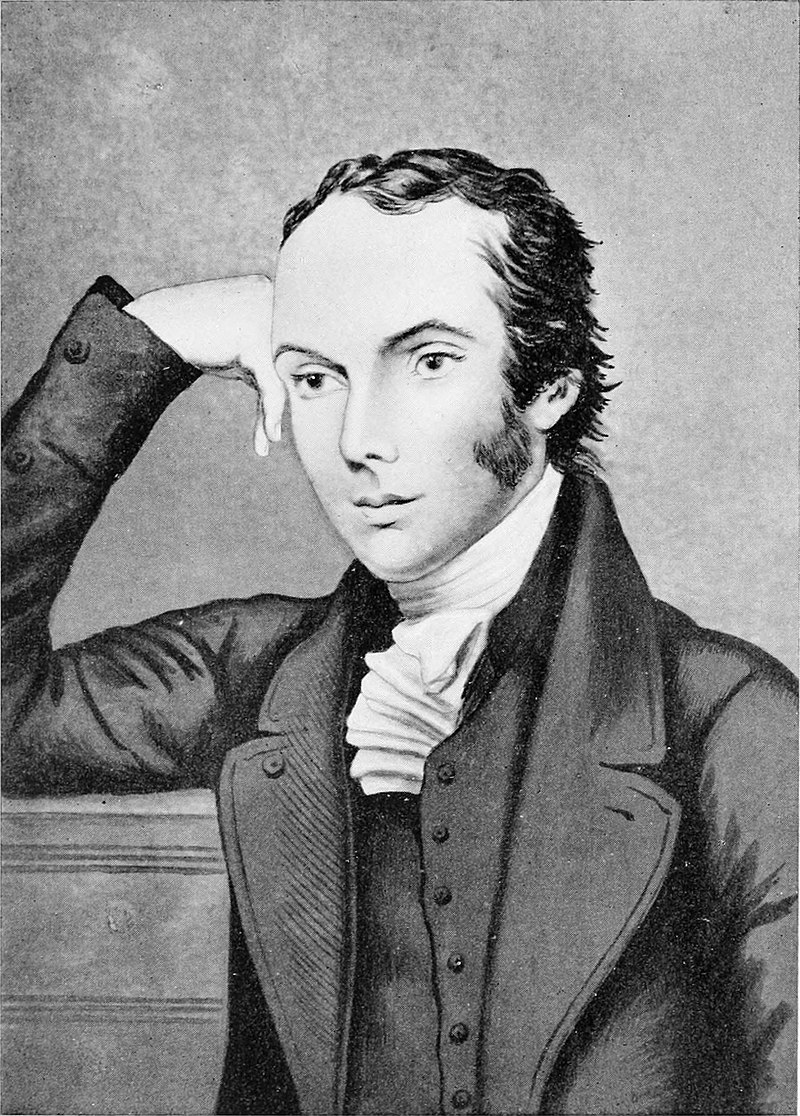
- Prince sought refuge in the Moravian Church in Hatton Garden. Many people came to help her, offering her warm clothes and money.
- In November, she was taken to the office of the Anti-Slavery Society in Aldermanbury, where she met the secretary of the movement and abolitionist writer, Thomas Pringle.
- Pringle accompanied Prince to the law office of the abolitionist, George Stephen, in order to seek assistance. Prince wanted to return to Antigua and to reunite with her husband as a free woman.
- They attempted to negotiate to have Wood manumit Prince. However, her enslaver refused.
- In 1829, it was decided to bring Prince’s case to Parliament. The Society presented a petition in June. At the same time, they introduced a bill to free all enslaved people from the Caribbean in England, whose enslavers had freely brought them there.
- The petition was unsuccessful, which meant that Prince could not travel back to her husband in Antigua without submitting to the Woods’ control.
- Prince had to earn a living and so found work with the Forsyth household. She only worked there for a short time, as the Forsyths moved away from England.
- Later that year, she began working for Pringle and his wife as a paid household servant. She lived in their residence and was later acquainted with the clergyman of the Church of St Mark.
- Around this time, the Woods left for Antigua with their daughter.
- In 1830, Pringle and other abolitionists again attempted to arrange an amicable agreement with Wood using their social and political connections.
- Wood declined to manumit Prince and responded with a letter to Taylor, the secretary of Antigua’s governor. In it, he made several points attacking Prince’s character.
- The letter reached Pringle, who became determined to publish Prince’s life narrative.
- While it was Prince’s idea to tell her testimony, the project only began after Pringle had read Wood’s letter. The History of Mary Prince was published in 1831.
Who was part of the publication?
-
- The abolitionist writer, Susanna Strickland, transcribed and compiled Prince’s narrative.
- Pringle was the editor of the manuscript and wrote the preface and rebuttal to Wood’s letter, which was included as a supplement to Prince’s story. He also included the Narrative of Louis Asa-Asa, A Captured African.
- The abolitionist Joseph Phillips, who had lived in Antigua for many years, assisted on the Antigua section.
- Samuel Bagster was the printer. F Westley and A H Davis were the publishers in London, and Waugh & Innes in Edinburgh.
- The book was the first account of a Black enslaved woman’s life to be published in Britain. Originally intended for the British audience, it exposed the troubles and hardships that Prince went through and helped depict the brutalities of enslavement. It was published in three impressions in its first year.
- In the supplement, Pringle called for the government to introduce a bill that would grant freedom to any enslaved individual who was in Britain.
- Following the publication, there emerged public altercations between Pringle and those who were opposed to the emancipation of enslaved people.
- Two libel cases were filed: the Pringle v Cadell case and the Wood v Pringle case. Prince appeared as a witness in both cases.
- The Blackwood’s Magazine, whose London publisher was Cadell, published a lengthy letter that maliciously targeted Prince and the Pringle family. Heard in February 1833, the case was won by Prince.
- In the second court case, Wood charged Pringle with libel. Also heard in February 1833, the judge found Prince’s account to be exaggerated, hence Wood won.
- Apart from the public uproar it caused, the book had a galvanising effect on the anti-slavery movement in Britain.
- The Slavery Abolition Act of 1833 was passed, providing for the gradual abolition of slavery in most parts of the British Empire.
- By August 1833, Prince could now return to Antigua as a freed woman. Not much was known about Prince’s life following this, but it is believed that she died after 1833.
- On 1 August 1838, some 800,000 enslaved people living in the British colonies throughout the Caribbean were finally freed.
- In 2012, Prince was named as a National Hero of Bermuda, and since 2020, Mary Prince Day is now celebrated on 2 August in Bermuda.
Image Sources
- https://upload.wikimedia.org/wikipedia/commons/3/3b/Mary_prince_first_edition_frontpage.jpg
- https://upload.wikimedia.org/wikipedia/commons/thumb/1/11/Turks_and_Caicos_Islands_raking_salt_stamp_1938.jpg/220px-Turks_and_Caicos_Islands_raking_salt_stamp_1938.jpg
- https://upload.wikimedia.org/wikipedia/commons/thumb/d/dd/Thomas_Pringle_%28Teasury_of_South_African_Verse%29.jpg/800px-Thomas_Pringle_%28Teasury_of_South_African_Verse%29.jpg
Frequently Asked Questions
- Who was Mary Prince?
Mary Prince was an enslaved woman born in Bermuda around 1788 and later lived in Antigua. She became known for her autobiography, "The History of Mary Prince," one of the earliest narratives by a Black woman to be published in the United Kingdom.
- When was "The History of Mary Prince" published?
"The History of Mary Prince" was first published in 1831 in London. It was an important document in the anti-slavery movement and contributed to the abolitionist cause.
- What does Mary Prince's autobiography reveal about slavery?
Mary Prince's autobiography provides a vivid and harrowing account of the brutality and injustices of slavery. It describes the harsh treatment she endured, including physical abuse, separation from her family, and the relentless toil of plantation labour.
